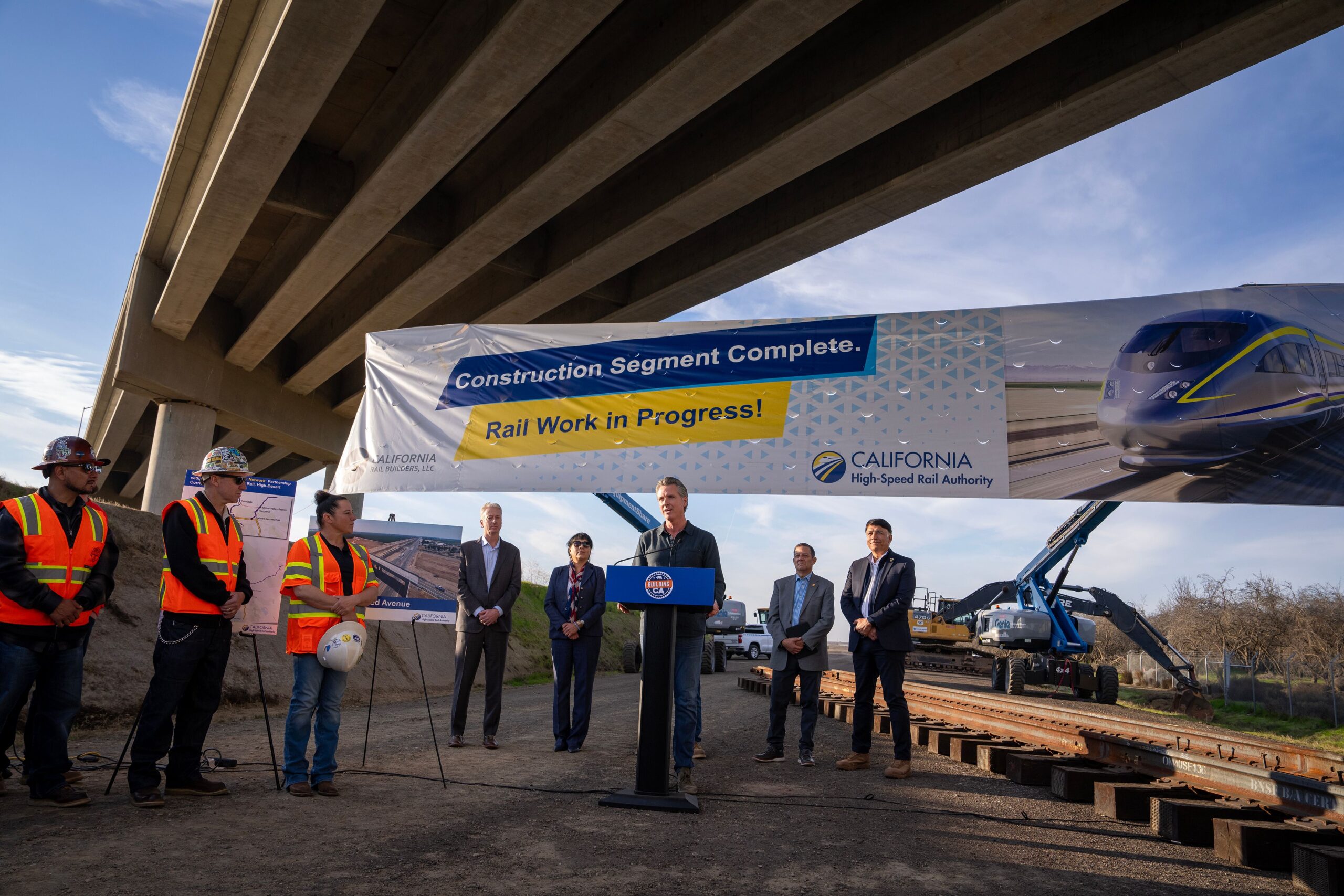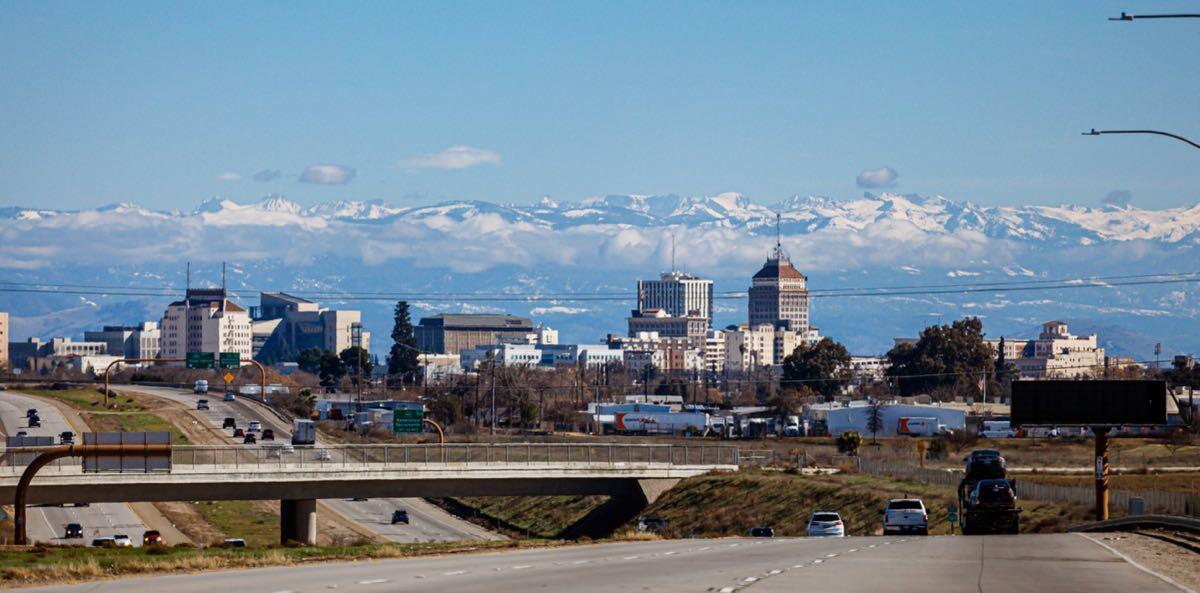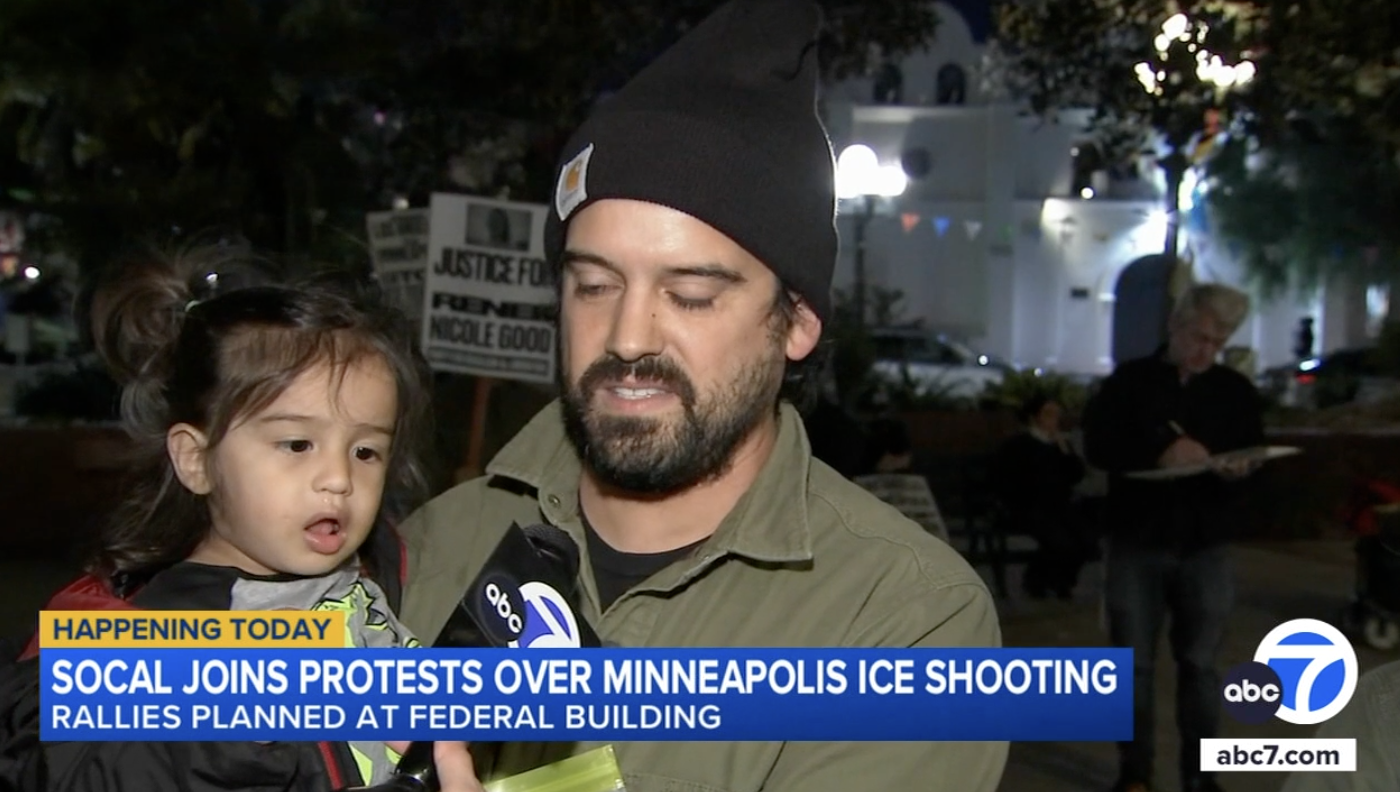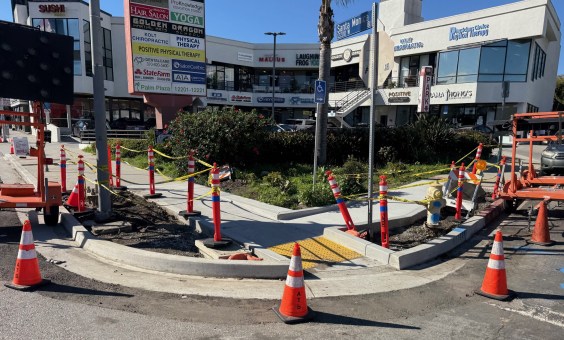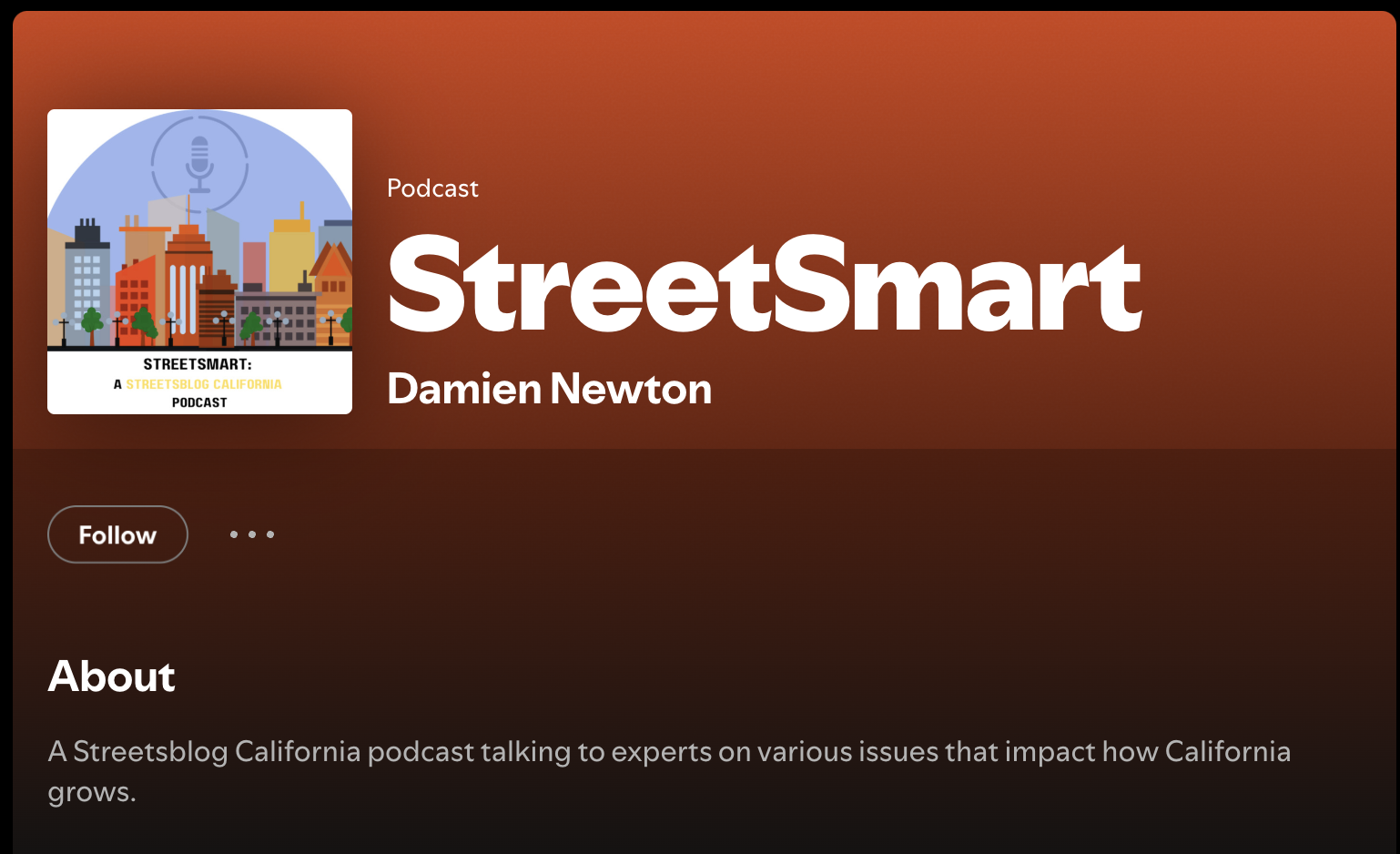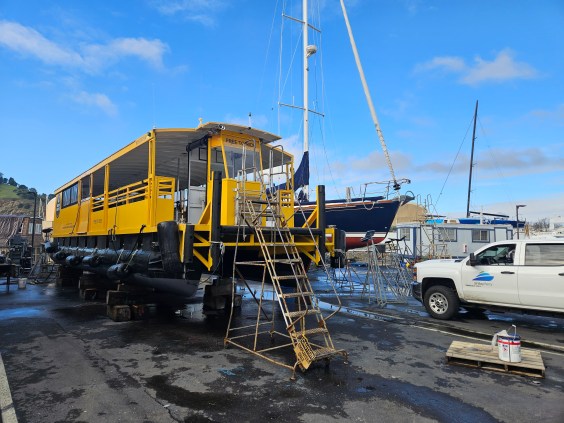“When I first introduced this legislation, I didn’t think about it being about high speed rail,” testified Senator Scott Wiener (D-SF) at the Assembly Transportation Committee last Monday before a debate and vote on SB 445, Wiener’s legislation to speed up construction of multi-jurisdictional transportation projects.
I know the feeling Senator. I didn’t expect to spend the last week talking about California High Speed Rail (CAHSR) either. Streetsblog even made the decision early in the week to focus on the red light camera legislation instead of SB 445 when making our story budget for the week.
While Wiener might not have been expecting a conversation on CAHSR, it dominated the discussion at the Transportation Committee. The conversation repeated itself later in the week at SB 445 hearings held by Assembly Local Government and Utilities & Energy Committees. For more on SB 445 click here and here.
And while Wiener celebrated the legislative hat trick, a bill passing three committees in one week, in a press statement on Friday, it wasn’t even the biggest High Speed Rail news of the week. President Donald Trump and US DOT Secretary Sean Duffy announced they were pulling back $4 billion in federal funds promised for the project and made a series of public statements designed to inflame voters in the Midwest who don't know anything about the project…but didn’t make sense to anyone in California except Republican Congressmember Kevin Kiley (R-Rocklin).
For at least the next three years, and possibly until the project is completed, California is going to have to go it alone.
While it’s certainly a blow to the project to lose any funding, California has known since November that it had lost its federal partner. Trump had tried, and failed, to rescind federal funds in his first go-round. Former Trump-BFF Elon Musk’s pre-politics flops include the time he pushed a fake technology, hyperloop, to compete with CAHSR in people’s imaginations to try and convince politicians to pull support a decade ago.
The good news for CAHSR backers is that despite the doom-and-gloom forecasting around the project in both the state and national media, the project itself is doing well and the state has a go-it-alone plan under new CEO Ian Choudri.
In last week’s story on the federal retreat, Streetsblog listed many of CAHSR’s recent accomplishments. Today’s list will focus on what the state needs to do to keep the project rolling into the foreseeable future.
First and foremost, keep building! Use that annual $1 billion allocation from Cap and Trade. There should not be one day, one single day, where there is no construction happening unless it's a major holiday of some sort.
While the public relations strategy of the agency has improved dramatically in the last year, the agency should be in crisis communications mode at all points now. You never know when the Trump Administration will create another scandal and need to distract people so he decides to “hippy punch” at California. Be ready, within a couple of hours notice, to have Choudri or another major official give a press event at a construction site to respond to a statement from D.C. Every news clip on the national news about what the feds say about CAHSR should include a response that “shows and tells” that CAHSR is on-track and under construction.
“Accept and move on” when pushed on the project’s past. Everyone that is sent out to discuss the current successes of CAHSR should be ready to say “yes, the project got off to a rocky start but in the last five years we accomplished <list of accomplishments> and the federal government is walking away from the project when it’s succeeding.” The recent push that USDOT and Trump’s complaints about the project as “old news” were a good example of that messaging.
Partisan detractors like to point out how the project’s cost has ballooned from what voters were promised in 2008. While it’s true that the project’s estimated cost has gone up, instead of arguing about whether or not there’s been “waste, fraud, and abuse,” flip the argument. Try a version of, “we’re all very sad the Republican Schwarzenegger administration underestimated the cost of the project in 2007 and 2008, but we still believe the project is worth building.”
On a related note, the agency has done a much better job of celebrating its accomplishments in recent years, sending out announcements on every completed interchange project and large media events for the milestones that will lead to actual construction of the rail line once the hundreds of miles of pre-work are completed.
Of course there’s a budget crisis and it’s only going to get worse for at least the next three budget cycles. Everyone understands that. But if California is going to use CAHSR as a physical manifestation of our independence from the federal government, then it needs to do everything it can to support the project. And the state sure does spend a lot of money on highway expansion projects, even some that may require snorkeling gear to use in the near future.
Of course, continue to push, both politically and legally to get both the Trump Administration and any future administration to live up to the commitments made by the federal government. California is not one of the president’s former casino contractors it can stiff and walk away from without repercussions.
And last, the legislature should pass SB 445 and Newsom should sign it into law in the next couple of weeks.
It’s going to be a long journey to complete construction of the nation’s first true high speed rail line, and it’s a shame that the politics around rail are so backwards in this country that it’s a point of controversy instead of national unity. But if this needs to be California’s accomplishment alone, then so be it.
